Disruptive CGI and Digital Aesthetics: Counter-culture, Counter-corporate, and Corporeal Examinations in Experimental Digital Art
Abstract
This paper contributes a digital-aesthetics approach to relevant new media discourse topics concerning the market, power and control, and identity formation by way of discussing the phenomenon of computer-generated imagery (CGI). Specifically, I will examine experimental digital artists who, directly or indirectly, harness imperfection and/or use ‘disruptive CGI’ aesthetics in their experimental digital art. The artists on whom I will focus on are Alan Warburton, Claudia Hart, and Mike Pelletier. I will argue that through noticeable, disruptive, and non-photorealistic CGI aesthetics, these artists provide (self-)awareness of the medium of the computer, and the generated imagery it helps humans produce. This reflexive awareness confronts viewers with contemporary and future usages and values linked to a) mainstream aesthetics in corporate-driven CGI (i.e. Hollywood, game culture, etc.) and its relation to the political sphere, as well as b) questions inherent to (the possibilities and limitations of) the medium’s human-machine relationship to corporeality and environments.
Keywords
CGI ■ experimental ■ photorealism ■ digital grotesque ■ the uncanny valley ■ corporeality ■ corporatization ■ digital aesthetics ■ media ecology ■ McLuhan ■ Foucault
Introduction
Recent academic discourse within the field of new media primarily deals with observation and critique of the mass(es) use of new technological mediums. Within this dialogue, the applied critical theory that appears at the forefront include topics surrounding power and control (Cheney-Lippold, Zuboff, Gillespie, Tufekci), the market and the state (Bratton), identity formation (Bennett and Segerberg), and (interface) layout and design and its consequential affordances (Norman, Bucher and Helmond, David and Chouinard). However, while this particular (academic) discipline stresses the contemporary imperativeness of these conceptual topics, they do so within a limited range of media formats and usages typically associated with a software-sensitive approach. This approach includes theoretical application to analysis of social media platforms, public search information engines, or in general, platformization (Poell et al., Seymour) and data-driven software programs (Christin, Yeung). Yet, as argued by Logan, media demand “a holistic and multidisciplinary treatment if their impact on human interactions is to be properly understood.” (Logan, 351) As such, I offer an alternative approach towards understanding these relevant theoretical concepts concerning the market, power and control, identity formation, and design or aesthetic affordances. Through using a digital-aesthetics approach alongside a media ecology perspective, this paper will view these relevant new media theories in accordance to the phenomenon of computer-generated imagery (CGI). This is not to claim that this is the only or most important approach and/or new media phenomena, but simply to add to the pre-existing and current discourse: “Since all media are extensions of ourselves, or translations of some part of us into various materials, any study of one medium helps us to understand all others.” (McLuhan 1964, 139)
Within this discussion of CGI, I will also draw on Marshall McLuhan’s conception of the revolutionary and capable nature of the artist regarding cultural critique of (new) media. Specifically, his assertion that “[t]he artist is the man in any field, scientific or humanistic, who grasps the implications of his actions and of new knowledge in his own time.” (McLuhan 1964, 65). The way in which these experimental digital animators provide such critical insight is through their re-introduction to the “message” of the medium, which McLuhan defines as the contemporary form or function of the medium. McLuhan argues, “In a culture like ours, long accustomed to splitting and dividing all things as a means of control, it is sometimes a bit of a shock to be reminded that, in operational and practical fact, the medium is the message. This is merely to say that the personal and social consequences of any medium-that is, of any extension of ourselves- result from the new scale that is introduced into our affairs by each extension of ourselves, or by any new technology. (McLuhan, 7)
By using disruptive CGI aesthetics and (self-)reflexive awareness, experimental digital artists confront the contemporary “message” of the medium by exposing its present form and function and, in turn, placing those observations in comparison with other (un)realized possibilities of the medium. Specifically, through harnessing imperfections in their exploration of this medium’s unique aesthetic qualities, experimental digital animators demonstrate that “seductive digital surfaces speak more about this age of technology when they fall apart, revealing their construction at the hands of imperfect people and imperfect machines.” (Warburton) In turn, aesthetically discussing the notion that a “medium is a technology within which a culture grows; that is to say, it gives form to a culture’s politics, social organization, and habitual ways of thinking.” (Postman, 10) This reflexive awareness enables confrontation with the contemporary “message” of the medium with respect to aesthetics of dominant, mainstream, corporatized CGI (i.e. Hollywood, game culture, etc.) and it’s relation to the political sphere, as well as questions inherent to (the possibilities and limitations of) the medium’s human-machine relationship to corporeality and environments. The CGI artists on whom I will argue are doing so are Alan Warburton, Claudia Hart, and Mike Pelletier.
Alan Warburton: Goodbye Uncanny Valley (2017)
Cultural Matrix Territories of CGI
McLuhan declares that the “content” of any medium or technology is “always another medium” (McLuhan, 8), and/or its user (i.e. humans). He then argues that, consequently, “the latest approach to media study considers not only the “content” but the medium and the cultural matrix within which the particular medium operates.”(McLuhan, 11) In Goodbye Uncanny Valley, Alan Warburton visually maps out four territories of the cultural matrix within which all computer-generated imagery operates (Figure 1). These four territories include: Uncanny Valley, Frontier, Beyond (the frontier), and Wilderness.
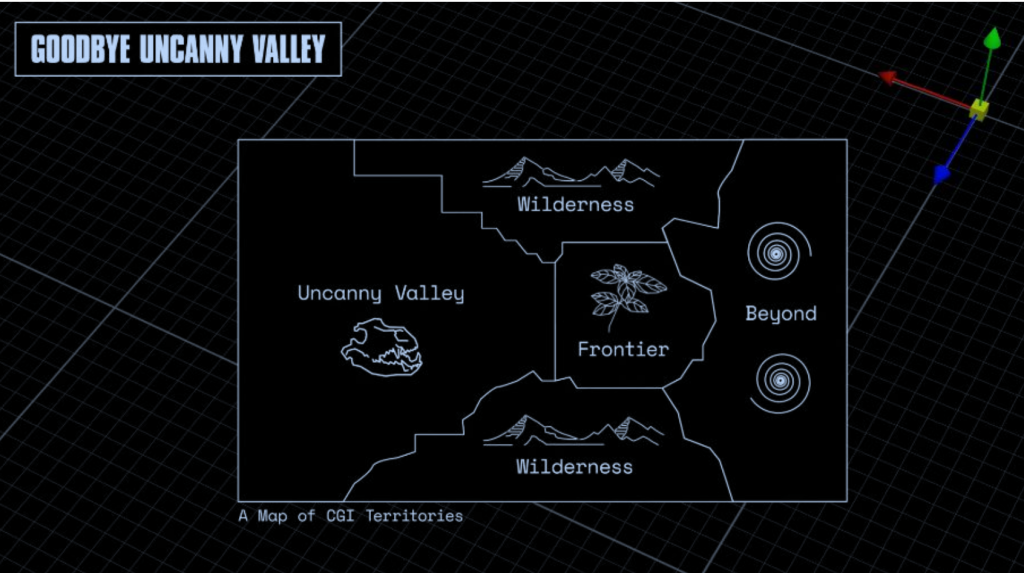
Fig. 1. Warburton, Alan. Goodbye Uncanny Valley. 2017. Uncanny Valley: Human vs. Non-human Corporeality
The ‘uncanny valley’ is a concept that was first coined by Mashahiro Mori in 1970, when he was a professor at Tokyo Institute of Technology. Mori hypothesized that “a person’s response to a humanlike robot would abruptly shift from empathy to revulsion as it approached, but failed to attain, a lifelike appearance. This descent into eeriness is known as the uncanny valley.” (Mori, 1) As such, in Mori’s explanatory case, (as seen in Figure 2) the axis’ and line of the uncanny valley concerns the level of human comfortability regarding human vs. nonhuman corporeality. Furthermore, as can be seen in Figure 3, the uncanny valley slopes are steepened with the presence of movement and thus it is this version that is closer to our dealings with CGI’s depiction of (non-)human corporeality.
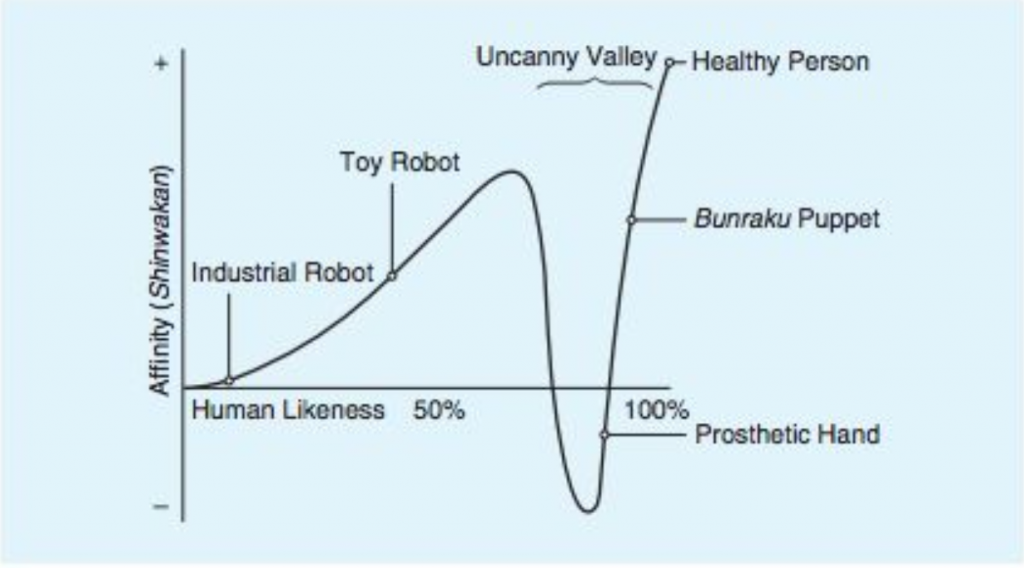
Fig. 2. Mori, Mashahiro. The Uncanny Valley Graph.
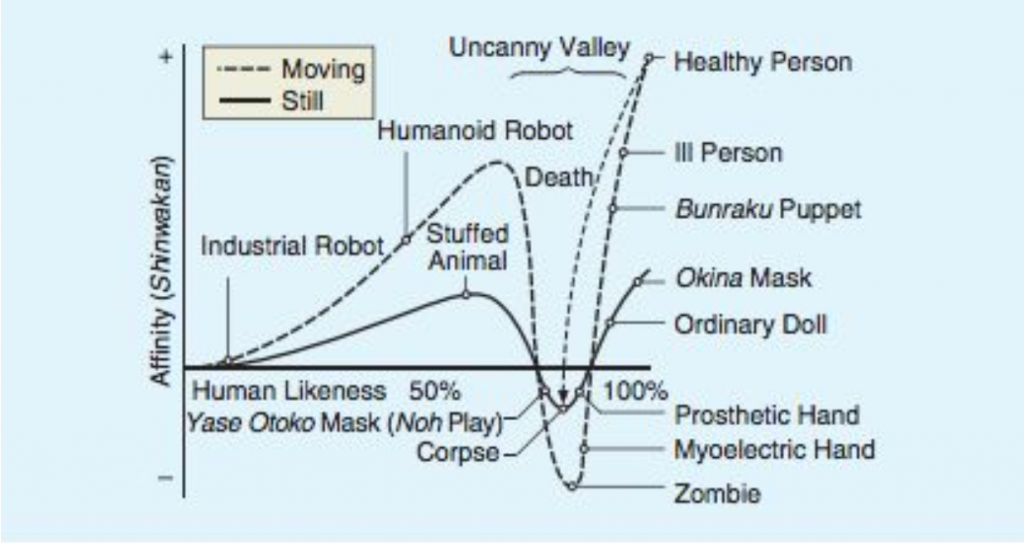
Fig. 3. More, Mashahiro. The Uncanny Valley Graph (with the presence of movement).
Decades after Mori’s hypothesis, the ways in which the notion of the uncanny valley would be brought to our attention, in various forms and social relevance, increased drastically. Between 1995-2015, Hollywood excelled in acquiring the ability to simulate human corporeal phenomenon one-by-one until they acquired a “library of simulated phenomena.” (Warburton) This library extended itself into (most all) CGI-software interface design and layout presets, so that each had a “comprehensive off-the-shelf toolkit for the production of natural motion and photoreal imagery.” (Warburton) Consequently affording that, “there is now a general consensus, within visual effects, that more or less anything can now be simulated realistically.” (Warburton)
Frontier and Beyond: Corporatized CGI and ‘Post-truth’
Accordingly, the ‘Frontier’ and ‘Beyond (the frontier)’ have been sculpted by this history thus are shaped, in association with, and driven by mainstream, cinematic CGI production. The ‘Frontier’ territory pushes CGI photorealism and, in order to continue appeasing the viewer’s appetite for novelty, photorealism of the ‘spectacle’ (e.g. visual effects in action or end-of-the-world movies). The territory labelled ‘Beyond (the frontier),’ furthers this photorealism with what Warburton terms “theoretical photorealism,” meaning ‘photorealism of the unseen’ or “unobserved but visually accurate.” (Warburton) Through this approach, ‘Beyond (the frontier)’ contributes to the “post-cinematic affect,” in which CGI treats time and space as malleable by creating “abstracted, visceral sequence(s) of spatially and temporally disconnected impacts.” (Warburton) These post-cinematic affect qualities are evidential to McLuhan’s observations regarding ‘the movie’, specifically that, “[t]he movie, by sheer speeding up the mechanical, carried us from the world of sequence and connections into the world of creative configuration and structure. The message of the movie medium is that transition from lineal connections to configurations.” (McLuhan, 12)
The configuration of theoretical photorealism combined with the phenomenon of the ‘spectacle’ extends beyond corporeal and/or environmental aesthetics and enters into the “post-truth” political domain, both in social and literal-visual terms. Literally and technically, CGI effects have progressed to such an extent that non-real speeches by world leaders and politicians are able to be generated through CGI, such as with Synthesizing Obama (2017) (see Figure 4). Socially, Warburton argues, “as computer-graphics get better, we believe all images less,” (2017) and on this account CGI acts as “living vortices of power.” As “living vortices of power,” “media create new social patterns. Knowledge of the dominant media and technologies of a culture determine ‘the cause and shaping force of the entire structure [and] what the pattern of any culture [has] to be, both psychically and socially (McLuhan 1972, xii).” (Logan, 351)
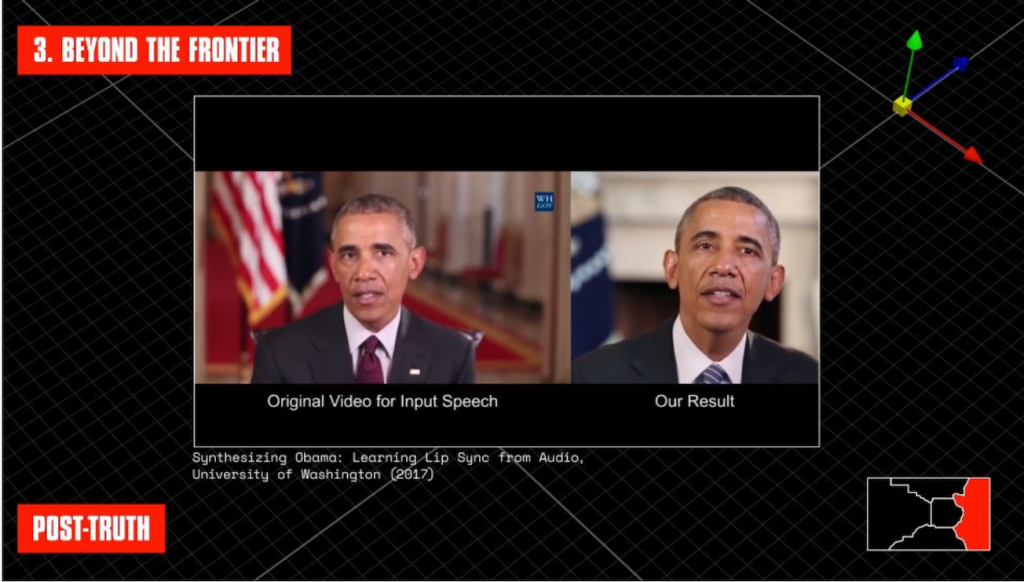
Fig. 4. Warburton, Alan. Goodbye Uncanny Valley. 2017.
In turn, these technologically-induced socio-political consequences are thus “fixed charges” on “the entire psychic life of the (global) community.” (McLuhan, 21) Since both the ‘Frontier’ and ‘Beyond (the frontier)’ harness and publicly push the notion that “if you can tell its CGI, it’s bad CGI,” meaning that “in order to work, computer-generated images must disappear” (Warburton) or in other words, “[i]f it works, it’s obsolete.” (McLuhan, 12), an (aesthetic) philosophy is configured in which “success equals invisibility.” (Warburton) For McLuhan, this becomes highly problematic as, “[t]he effects of technology do not occur at the level of opinions or concepts, but alter sense ratios or patterns of perception steadily and without any resistance,” However, there is hope as “each of the media is also a powerful weapon with which to clobber other media and other groups.” (McLuhan, 20-21)
Wilderness: Counter-culture and Counter-corporate
The ‘Wilderness’ territory consists of experimental hybrid artists who “work between art and commerce to explore avant-garde software aesthetics.” (Warburton) Primarily, this experimental CGI work alludes to the genre of the “digital grotesque.” Warburton explains, “[w]hat the grotesque is supposed to do is satirize hierarchies of power, often undermining authority figures to expose their bodily nature. The grotesque visions of the Wilderness treat technologies of power, CGI for example, like a body: exposing its construction, its deployment, and the labor consumed by it.” CGI as a technology of power derives from the (commercial) de facto power exerted by employers as well as the industry’s “primitive, essential and permanent function,” in being “producers of an efficiency, an aptitude, producers of a product.” (Foucault, 157) Essentially by being, “a very complex hierarchical unity, by ensuring its maximal performance through the unity of the whole in accordance with the specificity of the position and role of each individual.” (Foucault, 157)
The corporatized industry of CGI production as a technology of power comes as no surprise considering, “the history of technology of power […] has been exercised in workshops and in the factories,” (Foucault, 158) as “[t]he unity of the State is essentially secondary in relation to these specific powers, which come in the first.” (Foucault, 157) However, “[i]n paying closer attention to the tapestry of effects generated by these experimental artists, we might be able to move past reductive concepts […] and encourage a popular discussion about power, technology, and images in the twenty-first century.” (Warburton) This is due to hybrid artists exposing “where software excels and where labor must be concentrated” (Warburton) within the corporatized CGI territory. They do so through an experimental approach of accepting and embracing CGI’s materiality alongside artistic reflexivity – “a medium’s acknowledgement of its own inner-workings.” (Harris et al.)
Claudia Hart: Machina (2006)
One example of such an approach is in CGI artist and teacher, Claudia Hart. Hart describes the dominant CGI cultural matrix of production as, “a culture that is vocationally oriented, and therefore engineering oriented – with the intention of training future digital workers to man proscribed stations in the carefully engineered production pipelines of multimillion dollar Hollywood effects films or elaborate shooter games. […] we are talking about boot camp for the armies of the military entertainment complex.” (Hart, 1) In response, and in order to combat the production of this mainstream, corporate mentality in upcoming CGI artists (i.e. her students), Hart developed the 3D animation work entitled Machina (2006) (Figure 5) through a series of in-class tutorials.
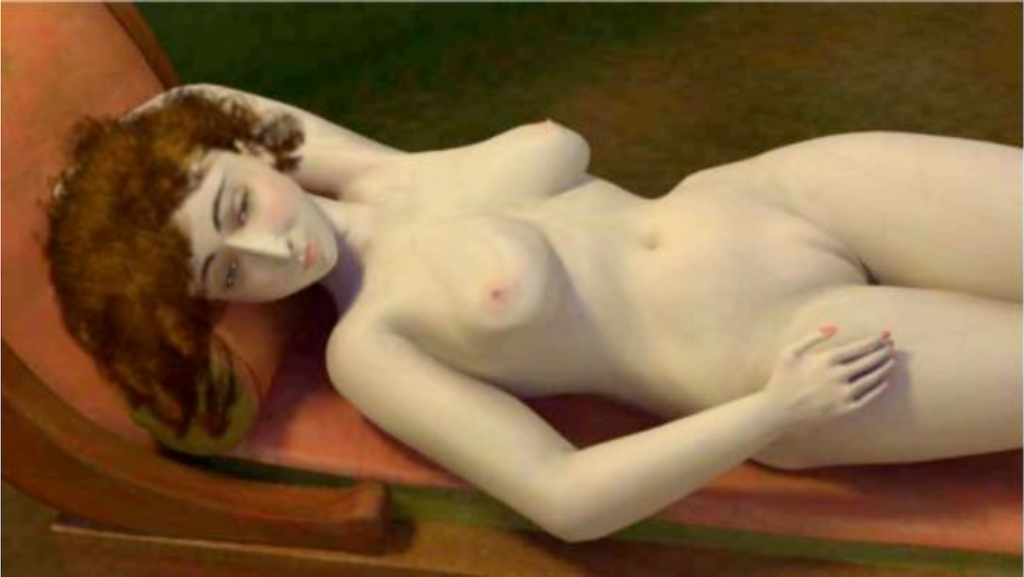
Fig. 5. Hart, Claudia. Machina. 2006. 3D animation, looped projection.
Hart’s explanation of the corporate production of CGI effects and cultural values parallels the characteristics that Foucault ascribes to ‘anatomo-politics’ and the “individualizing technology of power” (160). Specifically, a) the division of labor and ‘discipline’ overseen on the individual within the workshop, b) the process of apprenticeship, in which the more one is taught techniques, “the longer his apprenticeship,” and the more valuable one becomes, and c) the production of “these new disciplinary methods through which the multiplicity of individuals are individualized” (Foucault, 160) within the setting of an educational institution. Moreover, “the goal was nonetheless absolutely not to say ‘you must not’, but essentially to obtain a better performance, a better production, a better productivity from the (CGI-)army.” (Foucault, 157)
Consequently, Hart aims to combat this technology of power from the top-down in a very Foucauldian way. She does so through re-orientating her students, as well as her viewers, with the medium via the digital politics of sex and corporeality. She states,
“[b]y creating virtual images that were sensual but not pornographic within mechanized, clockwork depictions of the natural, I tried to subvert earlier dichotomies of woman and nature pitted against a civilized, “scientific,” masculine, homo-social world of technology. In my own way, with my intentionally feminine and slow moving animations (as opposed to the hyper reactive, violent, speedy world of games), I was staging a romantic rebellion against a technocratic and bureaucratic culture.” (Hart, 1)
Furthermore, Hart explains,
“when I first started teaching at the School of the Art Institute, […] [f]ew students with sophisticated or serious esthetic aspirations be they in fine art or high-end design ever took 3D animation classes. Where other forms of new media have blossomed in recent years, 3D at my school, […] did not manage to attract practitioners who might establish it as a serious artistic or esthetic medium.” (3)
Fortunately, however, two years after Hart began her x3D project, the range and number of “serious” art students who took her class, and grew an exploratory interest in 3D animation along the way, began to grow. (Hart, 3) For McLuhan, Hart’s message and method is of dire importance to the contemporary understanding of this medium due to his belief that the serious artist “is the only person able to encounter technology with impunity, just because he is an expert aware of the changes in sense perception.” (McLuhan, 18) As, without the attraction or possibility for serious artists to explore the medium of CGI, “[s]ubliminal and docile acceptance of media impact” makes them “prisons without walls for their human users.” (McLuhan, 20)
Mike Pelletier: Parametric Expression (2016)
Anti-Environments and Corporeality
Returning back to the origin of the contemporary “message” of the medium, Mike Pelletier explores and questions CGI’s production of human emotions expressed in corporeal terms (i.e. a return to the uncanny valley). In Parametric Expression, Pelletier provides an unnatural, mono-teal backdrop that becomes an ‘anti-environment,’ or otherwise known as “countersituations made by artists, [which] provide means of direct attention to environments and enable us to see and understand more clearly.” (E. McLuhan, 28) This anti-environment takes the viewer out of trying to associate or compare the computer-generated world with the real. Instead, they are forced to view only the subject, one which Pelletier customised with the intention of being “fairly generic and androgynous, overly digital, but just realistic enough that [viewers] might feel some connection to it.” (Pelletier) As such, the character model has unreal corporeal qualities which allows the viewer distance enough to have a parallel non-comparable starting point in viewing the digital subject. However, as Pelletier is exploring the computer-generated model’s range of computer-generated human corporeal emotions, and particularly its relation to the uncanny valley, this small touch of realistic human corporeal qualities is necessary for viewers to make that “connection.” Especially considering that, “an invariant variable that is commensurate with the body of the observer himself i s more easily picked up than one not commensurate with his body.” (Gibson, 143) Through combining these three elements: a wholly non-realistic environment (or, ‘anti-environment’), unreal human corporeal qualities and emotions, and slightly realistic human corporeal qualities and emotions, the line between computer and human is questionably re-asserted by the artist. Through pixelating this line, viewers are both confronted as well as eased with pre-existing questions inherent to the relationship between the medium’s “content” (i.e. humans, other media), thus human vs. machine corporeality or ‘the uncanny valley.’
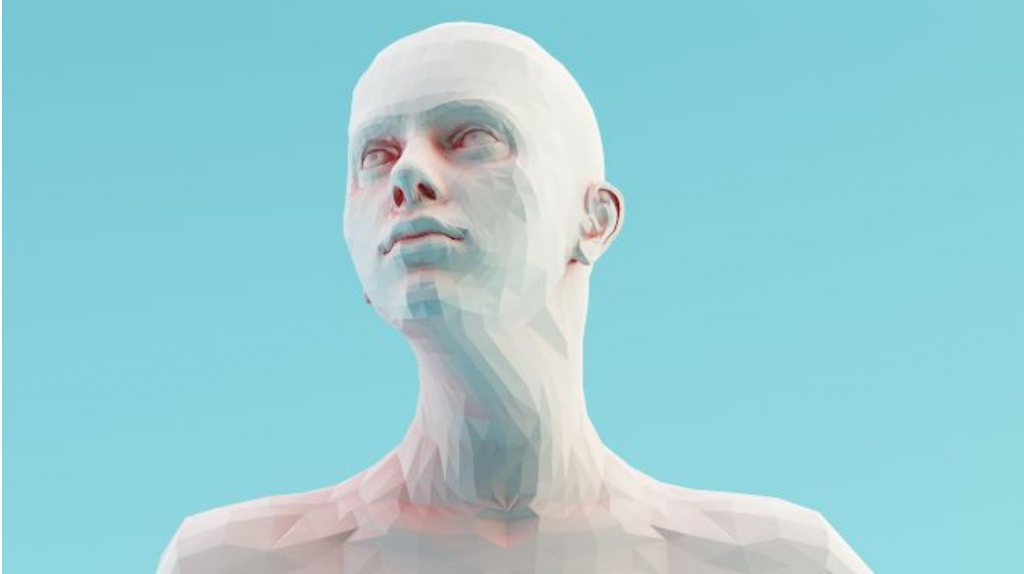
Fig. 6. Pelletier, Mike. Parametric Expressions. 2016.
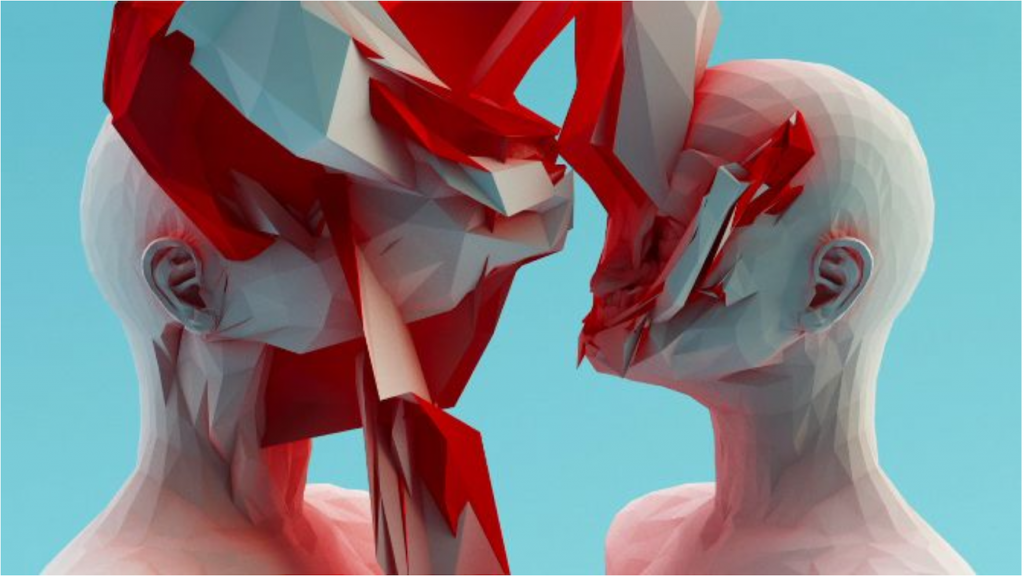
Fig. 7. Pelletier, Mike. Parametric Expressions. 2016.
Digital Aesthetics: Disruptive-CGI versus Corporate Photorealism
Rather than compare and contrast the computer’s ability to “truly” depict human corporeal emotions, Pelletier implodes these corporeal emotions in non-human, cubist-like aesthetics which could only be configured through the medium of the computer. Pelletier states, “By pushing the expressions to their most absurd extremes, I was trying to embrace how easy it is to get things wrong and to try to find beauty within the mistakes.” Pelletier’s abstract, anti-real, and medium-specific experimentation, 3D cubist aesthetics, and opposition to cinematic CGI aesthetic, parallels the (aesthetic) reaction of Cubist painters to the emergence of the mechanized movie. McLuhan explains this phenomenon,
To a highly literate and mechanized culture the movie appeared as a world of triumphant illusions and dreams that money could buy. It was at this moment of the movie that cubism occurred, and it has been described by E.H. Gombrich (Art and Illusion) as “the most radical attempt to stamp out ambiguity and to enforce one reading of the picture-that of man-made construction, a colored canvas.” For cubism substitutes all facets of an object simultaneously for the “point of view” or facet of perspective illusion. Instead of the specialized illusion of the third dimension on canvas, cubism sets up an interplay of planes and contradiction or dramatic conflict of patterns, lights, textures that “drives home the message” by involvement. […] In other words, cubism, […], drops the illusion of perspective in favor of instant sensory awareness of the whole. Cubism, by seizing on instant total awareness, suddenly announced that the medium is the message. (12-13)
Consequently, by demarcating the uniqueness of the medium itself, as opposed to its ability to imitate us and “our world” to an uncanny degree, the viewer is brought back to focus solely on the possibilities inherent to the medium, as well as reflect on the personal, corporeal, political and social consequences of the medium. Thus, this re-introduction to the medium further allows for the question of the medium’s message to be readdressed, “[f]or the ‘message’ of any medium or technology is the change of scale or pace or pattern that it introduces into human affairs.” (McLuhan, 8). In turn, questions concerning the “message” of computer-generated imagery, its contemporary form and function, arise: Why are we not exploring these characteristics inherently unique to the medium of the computer? Why do we yearn and thrive to stay within the limits of merely depicting us and the world around us to a photorealistic degree? If the medium is capable of non-human aesthetic depictions, thus not truly comparable or equal to humans or “our world,” can the ‘photorealistic’ CGI actually ever depict human reality? If not, what are we seeing, regarding, and/or demarcating as photorealistic CGI? Is the mainstream obsession with photorealistic CGI due to human narcissism, or is it due to some other driving factor? If it is the latter, what then is the driving factor?
Moreover, this exploratory nature towards discovery is evidential to the claim by Gibson in that, “[t]he doctrine that says we must distinguish among the variables of things before we can learn their meanings is questionable.” Pelletier sheds light on this questionability by exploring said variables (and their possible subsequent meanings) prior to “distinguishing” them, thus exemplifying the notion that “[y]ou do not have to classify and label things in order to perceive what they afford.” (Gibson, 134)
Conclusion
Aesthetically, the history of the medium of the computer has been one which has primarily dealt with human’s fear, conquering, and simulation of non-human corporeality. The mainstream, corporate CG production of simulated human corporeality has past, present and future political, social, and personal consequences. As of today, this prevailing form and function of computer-generated imagery thus is the contemporarily applied “message” of the medium. Experimental digital artists such as Alan Warburton, Claudia Hart and Mike Pelletier combat and/or question these consequences through a re-orientation with the “message” of the medium in the conscious application of disruptive-CGI aesthetics to their “content” (i.e. the users, ourselves, bodies, etc.). Arising out of this experimental method is both critical reflection upon the range of (unrealized) possibilities inherent to the medium as well as exposure of the actualized labor within the contemporary cultural matrix of computer-generated imagery. This reflection and awareness allows generated counter-cultural, counter-corporate CGI content to circulate as well as allows society to re-examine the role of corporeality in relation to the digital sphere.
Works Cited
Foucault, Michel. “The Meshes of Power.” Space, Knowledge and Power: Foucault and Geography. In: Crampton, J W and Elden, S (eds.) Aldershot: Ashgate, 2007. 153-162.
Gibson,JamesJ.TheEcologicalApproachtoVisualPerception. NewYork,HoveUK:PsychologyPress.1986. Harris, Miriam, et al. Experimental Animation: From Analog to Digital. Routledge, 2019.
<https://books.google.be/books?id=vNKFDwAAQBAJ&printsec=frontcover#v=onepage&q&f=false>
Hart, Claudia. Theory: Under Fire: 3d Animation Pedagogy and Industry Complicity in New Media Education. P anel for 2010 Chicago Art Association Conference. 8 February 2010. <https://drive.google.com/file/d/1DZxjdU1MGfC1A9joDxQPdgAqEwi4OHiN/view>
Logan, Robert. “McLuhan’s Methodology: There Was Method in His Madness.” Understanding New Media: Extending Marshall McLuhan. Peter Lang, 2010. 351-375. <https://www.researchgate.net/publication/267040900_McLuhan’s_Methodology_There_Was_Method_in_ His_Madness>
McLuhan, Eric. “Marshall McLuhan’s Theory of Communication: The Yegg.” Global Media Journal — Canadian Edition 1.1 (2008): 25-43.
McLuhan, Marshall. Understanding Media. Cambridge MA: MIT Press, 1994 (1964).
Mori, Masahiro. “The Uncanny Valley [From the Field].” IEEE Robotics & Automation Magazine 1 9.2 (2012):
98-100. <https://www.researchgate.net/publication/254060168_The_Uncanny_Valley_From_the_Field>
Postman, Neil. “The Humanism of Media Ecology.” Proceedings of the Media Ecology Association 1.1 (2000): 10-16.
Warburton, Alan. “Goodbye Uncanny Valley.” Alan Warburton. 2017. <https://alanwarburton.co.uk/goodbye-uncanny-valley>
Clark, Liat. “Horrifying and beautiful: embracing the uncanny valley effect: Mike Pelletier.” WIRED. 2013. <https://www.wired.co.uk/article/parametric-expression>